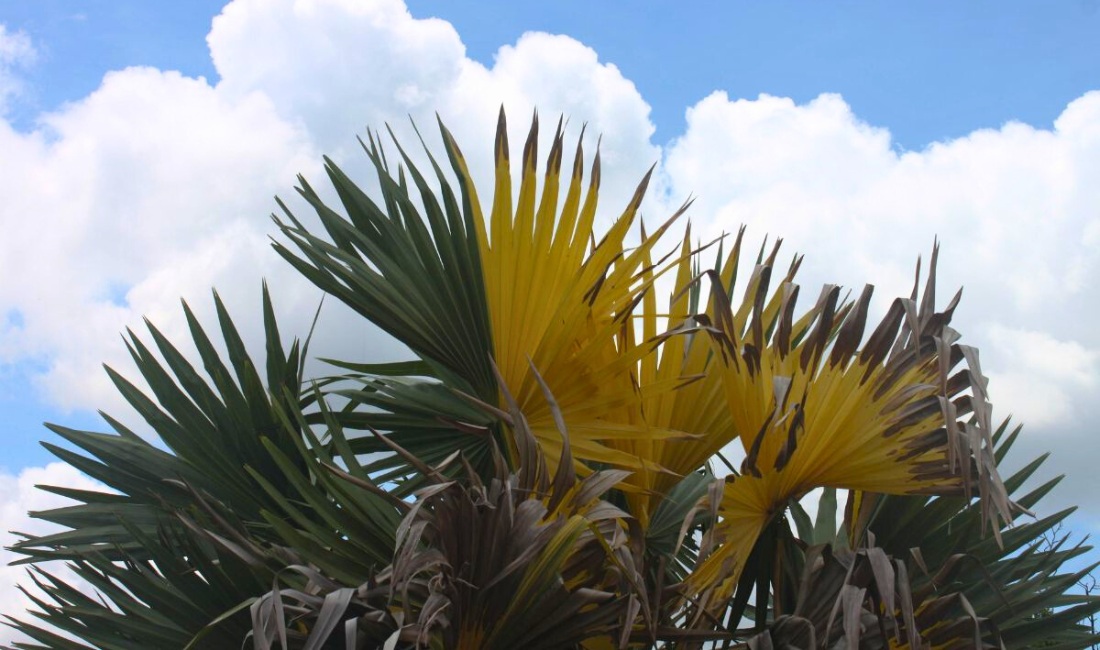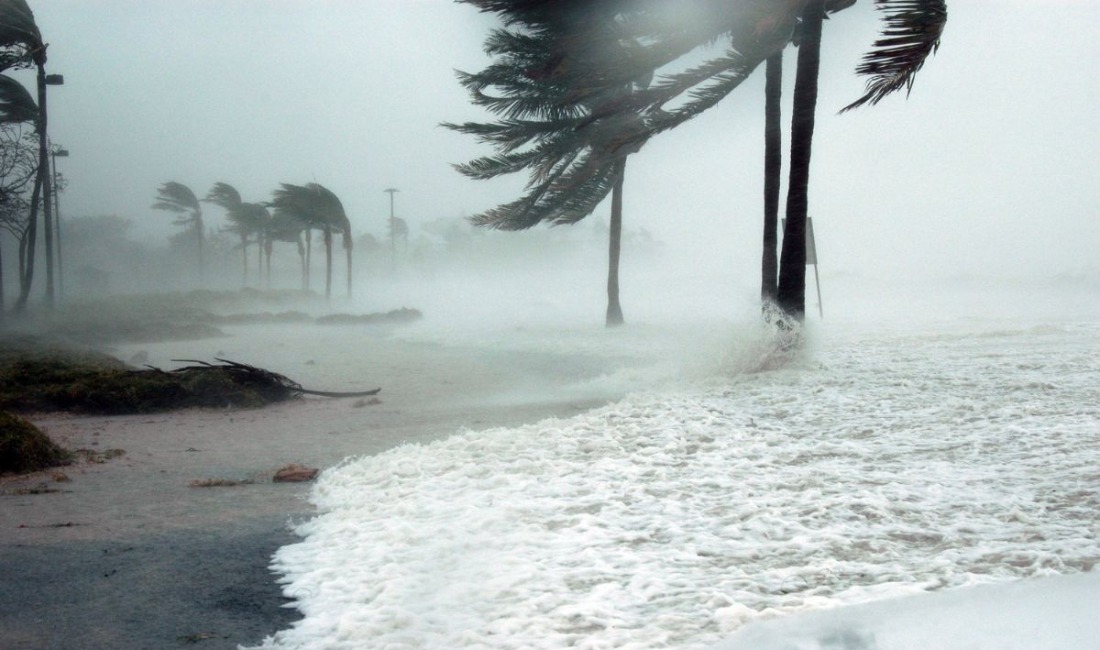This summer hit Palm Beach like a freight train. Remember that brutal heat wave in May, when temperatures nearly broke records at 95 degrees? Those heat indices have been running 100 to 105 degrees ever since, turning every landscape challenge into a full-blown crisis.
If you’re managing a luxury estate in Palm Beach, you’ve probably watched this relentless heat amplify every problem your property faces. Those plants you carefully protected all winter and watched come back to life a few months ago are now fighting for survival. Here’s how to tackle summer’s environmental challenges before they destroy your investment.
Key Takeaways
- Heat stress is intensified by hardscaping and high overnight temperatures, leaving plants with no time to recover.
- Sandy, fast-draining soil in Palm Beach landscapes struggles to retain water and nutrients, leading to undernourished plants.
- Drought conditions are pushing irrigation systems to their limits, and shallow watering habits are making root systems weaker.
- Salt spray from ocean breezes can travel up to half a mile inland, burning leaf edges and damaging coastal plantings.
- Sudden summer downpours expose poor drainage areas, while hurricane season adds the risk of structural tree damage and flooding.
What’s Really Beating Up Your Palm Beach Landscape This Summer?
Let’s be honest – managing a luxury property in Palm Beach means dealing with some of the most challenging landscape conditions. Between the relentless heat, salt spray, sandy soil that won’t hold nutrients, and now drought conditions hitting nearly 95% of the county, your plants are getting hit from every angle.
The good news is each of these problems has a professional solution.
Heat Stress
Heat indices over 100 degrees for days on end have your plants basically living in an oven. The ocean breeze helps, but all that gorgeous hardscaping – your gravel mulch, concrete patios, pool decking – absorbs heat all day and radiates it back out well into the evening. Your plants never get a break from the heat, even after the sun goes down.
Be on the lookout for things like:
- Leaf scorch around the edges
- Wilting
- Premature leaf drop
How to Protect Trees from Heat Stress
Coastal Gardens focuses on creating cooler microclimates around your plants through strategic shade structures and proper plant placement. We position taller, more heat-tolerant species to provide natural shade for more sensitive plantings during the hottest parts of the day.
We also recommend providing supplemental watering during extreme heat events, with timing adjusted to early morning or evening hours when plants can actually absorb and use the water effectively.

Sandy, Nutrient-Poor Soil
Florida’s famous sand might be great for beaches, but it’s terrible for keeping your plants fed and watered. Imagine trying to fill a bucket with holes in the bottom – that’s what fertilizing and watering sandy soil is like.
Signs your sandy soil is causing problems:
- Plants look pale or yellowing despite regular fertilizing
- Fertilizer seems to disappear after the first rain
- Plants struggle to establish even with regular care
How to Improve Sandy Soil
Start with a soil test through the University of Florida Extension because you can’t fix what you don’t understand. Once you know what’s missing, the solution is building up your soil’s ability to actually hold onto nutrients and water.
Coastal Gardens transforms sandy soil through strategic organic matter addition and smart fertilization. We use premium compost and mulch that slowly breaks down over time, creating a sponge-like layer that holds water and nutrients instead of letting them wash away. Our slow-release fertilization programs work with your improved soil to provide steady nutrition for months, not days, saving you money and giving your plants the consistent feeding they need to thrive in challenging conditions.
Drought Stress
With most of Palm Beach County experiencing drought conditions, your irrigation system is probably running overtime. The combination of extreme heat and drought is creating the perfect storm for plant failure – and your water bills are probably through the roof trying to keep everything alive.
Signs of drought stress are very similar to heat stress in that plants shut down to conserve what little moisture they have left. This includes:
- Leaves turning brown or crispy
- Plants drooping
- Slower growth
- Stunted new growth
- Bark cracking on trees and shrubs
How to Combat Drought Stress
The best way to combat drought stress is by watering smarter, not harder. Smart irrigation systems know when your plants need water, using soil moisture sensors to prevent waste.
Drip irrigation, mulch, and early morning watering also reduce evaporation and help moisture reach plant roots where it’s needed most. And don’t forget to check your plants for signs of stress regularly – catching symptoms early can mean the difference between recovery and replacement.
Salt Spray Damage
Did you know salt spray travels up to half a mile inland? Those ocean breezes that feel so nice are also carrying salt that land on your plants and basically give them chemical burns. When the water evaporates, you’re left with salt crystals that fry leaf edges and turn perfectly manicured landscapes brown.
Salt damage shows up as:
- Brown, burned-looking leaf edges
- White salt residue on leaves
- Stunted growth on the side of plants closest to the ocean
- Dead patches in lawn areas closest to the ocean
How to Prevent Salt Spray Damage
Start by rinsing salt off leaves and turf with fresh water after windy days, especially if you’re within a few blocks of the coast. Consider using salt-tolerant plants in exposed areas and install physical barriers, like hedges or windbreaks, to protect more sensitive species. Applying a layer of organic mulch can also help prevent salt from accumulating in the soil.
Poor Drainage Issues
Here’s the Palm Beach paradox: when it does finally rain, we go from one extreme to the other. Summer storms have a tendency of dumping inches in minutes, which makes paying close attention to how water moves through your property extremely important.
Drainage problems often look like:
- Standing water after rain that takes hours to disappear
- Musty smell around plant roots
- Yellowing leaves from the bottom-up
- Areas that stay soggy while others are bone dry
How to Fix Drainage Problems
Good drainage is about managing water flow, not just getting rid of it. Coastal Gardens works with landscape architects to implement beautiful solutions like rain gardens. We also handle the installation of French drains, permeable hardscaping, and proper grading to ensure water goes where you want it.

Hurricane Season Threats
As if the heat wasn’t enough, forecasters are predicting another above normal hurricane season due to relatively warm sea surface temperatures and the absence of El Nino. Plants weakened due to heat stress, drought stress, or nutrient deficiencies break easier, recover slower, and quite frankly, aren’t prepared for multiple rounds of severe weather (sometimes back-to-back).
Signs that your trees are at risk of causing storm damage include:
- Dead or hanging branches that could become projectiles
- Top-heavy trees with poor root systems
- Overgrown palms with excessive frond weight
How to Prepare for Hurricane Season
Preparing your property for a hurricane doesn’t start days before one is projected to hit Palm Beach – it starts now. Here’s how to help your trees and plants stand up to the stress:
- Schedule pre-storm pruning to reduce wind resistance and remove weak or dead branches before they become storm hazards.
- Thin out palms so heavy fronds don’t snap or become airborne during storms.
- Fertilize properly to strengthen plants and improve recovery after damage.
- Water deeply and consistently to encourage strong root systems.
- Schedule a professional inspection to catch hidden issues like decay or weak branch attachments.
- Remove high-risk trees or limbs before they become storm debris.
Frequently Asked Questions About Palm Beach’s Environmental Challenges in Summer
Why are my plants suddenly dying this summer but haven’t in the past?
This summer’s extreme conditions started early with record-breaking heat in May and have continued with heat indices over 100 degrees for extended periods. Combined with drought conditions affecting 95% of Palm Beach County, plants that survived previous summers are now facing unprecedented stress. The early heat arrival gave plants no time to gradually acclimate, making even established, heat-tolerant species vulnerable to failure.
What plants survive best in Palm Beach’s sandy soil and heat?
Florida natives are built for this climate. They’ve adapted to sandy, fast-draining soils, intense sun, salt exposure, and long dry spells, making them your best bet for a healthy, low-maintenance landscape in Palm Beach.
Here are some top-performing native trees, shrubs, and groundcovers:
Trees
- Live Oak
- Gumbo Limbo
- Southern Slash Pine
- Wild Tamarind
Shrubs & Small Trees
- Firebush
- Simpson’s Stopper
- Saw Palmetto
- Cocoplum
- American Beautyberry
Groundcovers & Perennials
- Beach Sunflower
- Coontie Palm
- Dune Sunflower
- Tickseed (Coreopsis)
- Seaside Goldenrod
When selecting non-natives, stick with species from similar climates (like the Mediterranean or Australia), but be cautious – not all are compatible with South Florida’s delicate ecosystems. Native plants are more resilient and typically require less fertilizer, water, and pest control.
Why does my irrigation system run constantly but plants still look stressed?
When you water frequently for short periods, you’re only wetting the top few inches while roots below stay dry. This actually trains plants to develop shallow root systems, making them even more vulnerable to heat and drought.
Instead, water deeply 2-3 times per week, allowing water to penetrate 12-18 inches down, where roots can access it. Morning watering (before 8 AM) is ideal because plants can absorb and use the water before the heat of the day causes rapid evaporation.
Is it safe to prune my trees during summer in South Florida?
Yes, but it depends on the tree species and current weather. Light, strategic pruning is safe for many trees during summer, especially when removing dead, broken, or hazardous branches ahead of hurricane season. Avoid heavy pruning during extreme drought or heat waves unless there’s a safety concern – stressed trees need as much foliage as possible to recover.
Your Palm Beach Property Deserves Expert Care – Call Coastal Gardens Today
This summer is testing even the most carefully maintained Palm Beach landscapes and what worked last year may not be enough to protect your investment this season. At Coastal Gardens, we specialize in proactive, high-end landscape care tailored to Palm Beach’s toughest conditions.
Let us help take the pressure off your landscape. Call us today at 561-308-7604 to schedule a property assessment and get a customized plan that protects your landscape now and prepares it for what’s coming next.
CALL US TODAY At 561-308-7604
Estate landscape Services
For Fine Properties in Palm Beach
With Coastal Gardens, you can rest easy knowing that your property is taken care of by a dedicated team of estate landscape professionals who truly care about creating and maintaining a dazzling outdoor space you can be proud of.
